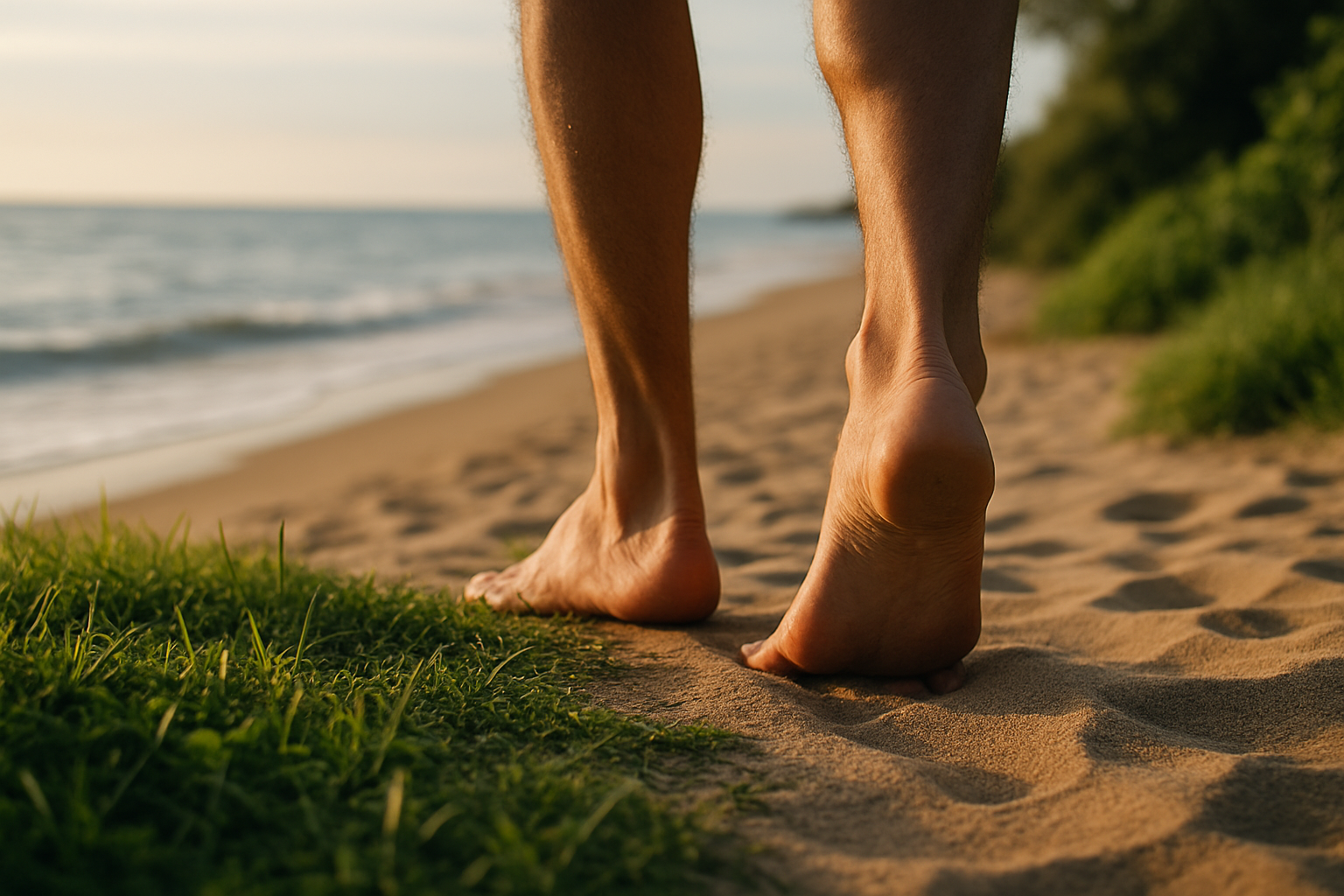Rediscovering Health and Wellness: The Science of Grounding
Imagine walking barefoot on a sandy beach, your toes sinking into the warm grains as the waves lap gently at your feet. It's not just an enjoyable and relaxing experience but also a natural wellness practice known as grounding or earthing. In this article, we delve into this lesser-known wellness trend, exploring its origins, scientific credibility, and potential benefits for your health.

The Origins and Evolution of Grounding
The practice of grounding is as old as humanity itself. Our ancestors lived in direct contact with the earth, walking barefoot, sleeping on the ground, and using animal skins for warmth and protection. However, in the modern world, we’ve become increasingly disconnected from the earth due to urban development and the use of synthetic materials.
The scientific interest in grounding started in the late 20th century when Clint Ober, a retired cable television executive, observed its potential therapeutic benefits. His theories led to several research studies that investigated the impact of grounding on various health parameters.
The Science Behind Grounding
Grounding or earthing is based on the theory that direct contact with the earth’s surface balances the body’s electrical energy. The earth has a negative charge due to a limitless supply of free electrons. When we make direct contact with the earth, these electrons are absorbed into our bodies, neutralizing free radicals and reducing oxidative stress.
Research has indicated that grounding may have a range of health benefits. A study published in the Journal of Inflammation Research found that grounding could reduce inflammation, improve sleep, and enhance general well-being. Another study in the Journal of Environmental and Public Health suggested that grounding could improve cardiovascular health.
However, while the results are promising, the science of grounding is still emerging, and more research is needed to fully understand its potential benefits and limitations.
Practical Applications and Considerations
The primary way to practice grounding is by making direct contact with the earth. This could be as simple as walking barefoot in your backyard, gardening without gloves, or spending time at a beach or lake. Grounding mats and sheets are also available, which can be used while sleeping or working.
While grounding is generally safe, there are a few considerations. Individuals with certain medical conditions, such as those requiring anticoagulant medication, should consult their healthcare provider before practicing grounding. Additionally, care should be taken when grounding in public areas to avoid potential hazards such as sharp objects or contaminated surfaces.
Quick Grounding Tips
-
Start with a few minutes of grounding each day and gradually increase the duration.
-
When grounding outside, choose a clean, safe area free from pesticides and other chemicals.
-
If using a grounding mat or sheet, follow the manufacturer’s instructions for use and cleaning.
The Future of Grounding
Grounding is a simple yet powerful practice that reconnects us with nature and our ancestral roots. While more research is necessary, current studies suggest that it could be a beneficial addition to a holistic wellness routine. As we continue to explore the interconnectedness of our bodies and the environment, grounding offers a promising path towards improved health and well-being.
In conclusion, grounding serves as a reminder of our profound connection with the earth, a connection that has the potential to nurture our health in surprising ways. It encourages us to step outside, feel the earth beneath our feet, and possibly experience the benefits of this age-old practice.





